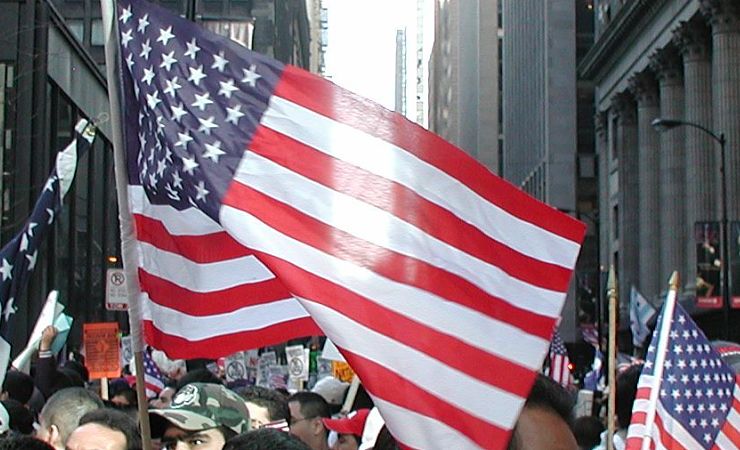What Can Social Science Tell Us About How We Relate to the Fourth of July?

Every July, as stars and stripes flare and then dissipate over the course of a week, I struggle to untangle my discomfort with celebrating Independence Day. As the United States looks back on a year that brought an insurrection at the capital, reckonings over systemic racism, and contention over healthcare, voting, and education, celebrating a glossy narrative of American unity seems fraught with contradictions. Can the social and behavioral sciences help us understand national pride and identification given my country’s many divisions?
The first hurdle is defining “the nation.” In Benedict Anderson’s seminal work Imagined Communities, he characterized the nation as a political community bound together by cultural roots and imaginary ties; although the members of a nation will never know all their fellow citizens, “ultimately, it is this fraternity that makes it possible [. . .] for so many millions of people, not so much to kill, as willing to die for such limited imaginings.” While “the nation” is often invoked in the context of international conflict or political upheaval, these imagined ties are more commonly reinforced unconsciously, through everyday interactions. In Banal Nationalism, Michael Billig theorized that the nation is constantly reproduced—not necessarily through flags and fireworks—but through the mundanities of everyday life, including our coins, our maps, and the words we use to describe ourselves in relation to others (“here,” “us,” “ourselves”).
Understanding how the nation is produced allows us to let go of the fantasy that “one nation” even exists, according to human geography professor Marco Antonsich. “Especially in its right-wing version, populist nationalism presents in fact the nation as a singular, monocultural and mono-ethnic entity,” writes Antonsich. “Such a discursive rendition purposely obliterates the ‘messiness’ of the nation, that is, the fact that any nation is a multivocal construct, as people engage in a variety of ways with its content and symbols.” If we imagine the nation to be fluid, without fixed symbols and “correct” models of patriotism, we can better question the exclusive claims to national entitlement made by one predominant group – white Americans.
Demographic, political, and religious differences largely determine how Americans relate to the nation. A recent survey conducted by sociologists Bart Bonikowski and Paul DiMaggio measured four dimensions of American nationalism: national identification, criteria for legitimate national membership, national pride, and national hubris (the view that America is superior to other countries). They found that “ardent nationalists”—typically white, older men—report high levels of national pride and hubris and harbor restrictive ethnocultural schemas for who and what counts as American. Nearly all endorsed the ability to speak English, having lived in America most of one’s life, feeling American, and respecting institutions and laws as “very important” for American citizens; a large majority viewed Jews, Muslims, agnostics, and naturalized citizens as less than “truly American.” On the opposite end of the spectrum, “the disengaged” class—comprised of young, well-educated respondents who are often members of ethnoracial or religious minorities—reported particularly low levels of pride for American institutions and refrained from identifying strongly with the country in general.
Two more moderate groups fell between the ardent nationalists and the disengaged: the so-called “creedal nationalists” and the “restrictive nationalists.” The wealthiest and most highly educated of any respondent group, creedal nationalists placed few restrictions on who can be “truly American” while reporting high levels of pride in American institutions and values, like universalism, democracy, and the rule of law. As Bonikowski and DiMaggio put it, “creedal nationalism is, to some extent, the ideology of men and women for whom the American Dream has worked.”
On the other hand, the restrictive nationalists are those for whom the American Dream has fallen flat. Comprised primarily of Americans who are disadvantaged with respect to some combination of race, gender, or social class, this group expressed moderate-to-low levels of national pride coupled with largely pro-Christian, anti-immigrant definitions for who counts as truly American. “Overall, it seems likely that this form of nationalism reflects ressentiment more than ideology,” Bonikowski and DiMaggio write.
Because individuals’ concepts of national identity depend so much on complex, personal factors, definitions of “nationalism” are just as varied and amorphous as definitions of “the nation.” George Orwell defined it as “the habit of identifying oneself with a single nation or other unit, placing it beyond good and evil and recognizing no other duty than that of advancing its interests.” (More colorfully, he also called it “the habit of assuming that human beings can be classified like insects and that whole blocks of millions or tens of millions of people can be confidently labelled ‘good’ or ‘bad.’”) In fact, social scientists find nationalism can be a negative or a positive, depending on how it’s expressed.
Through her research, political scientist Gretchen Schrock-Jacobson has found that ethnic nationalism in particular increases the probability of interstate war. “Nationalism entails the identification and vilification of ‘others,’ which can provoke violent responses if these ‘national enemies’ and their foreign allies can resist,” Shrock-Jacobson writes. When groups face threats to their identities—whether posed by immigration, political and social changes, or perceived discrimination—they respond with collective angst and increase ingroup strengthening behaviors. This includes drawing harsher lines around ingroups within the nation. According to Shrock-Jacobson, “elites can more easily marginalize opposition groups by depicting them as national threats.”
An example of this played out last year as conservative leaders and pundits began to use terms like “the Chinese Virus” in March of 2020, rebranding the coronavirus to tap into the well of inherent bias. Implicit Americanness Bias—a belief that Asian Americans are more foreign and less American compared to European Americans—began to increase among all non-Asians, most significantly among white conservatives.
On the Fourth of July, however, we generally talk less of nationalism and more of its cousin, patriotism. “Nationalism is not to be confused with patriotism,” Orwell wrote. “By ‘patriotism’ I mean devotion to a particular place and a particular way of life, which one believes to be the best in the world but has no wish to force on other people.”
When paired with a desire to question and improve current group practices, patriotism can be constructive. Studies in developmental psychology have extensively examined the benefits of “identity exploration” for sociocultural adjustment, well-being, and overall health. A strong sense of ingroup belonging coupled with identity exploration—the motivation to learn and reflect upon the meaning and implications of one’s group membership—allows people to question ingroup norms and gain a more open attitude toward others. Cultivating a positive sense of national identity may even make us happier: research shows that sharing a sense of civic pride and national identity can erode the boundaries between different ethnic groups and foster social trust.
For many, the Fourth of July is a reminder of America’s hypocrisy when it comes to “liberty and justice for all.” Slavery, for example, continued for almost a hundred years past the date some Americans declared “that all men are created equal” with an unalienable right to “Life, Liberty and the pursuit of Happiness.” Marginalized communities continue to face systemic inequities at every level of American society, including in healthcare, policing, housing, and education. But for those like me—members of what Bonikowski and DiMaggio would call the “disengaged” class—social science may point toward a way to constructively re-frame the holiday. While the Fourth of July emphasizes a one-size-fits-all model of patriotism, it may also provide a much-needed opportunity to reflect on the personal, political, and social work we need to do as a nation—not just on one day, but every day of the year.




























































































This is a well written, scholarly, erudite article without being pedantic. Excellent work Ella.